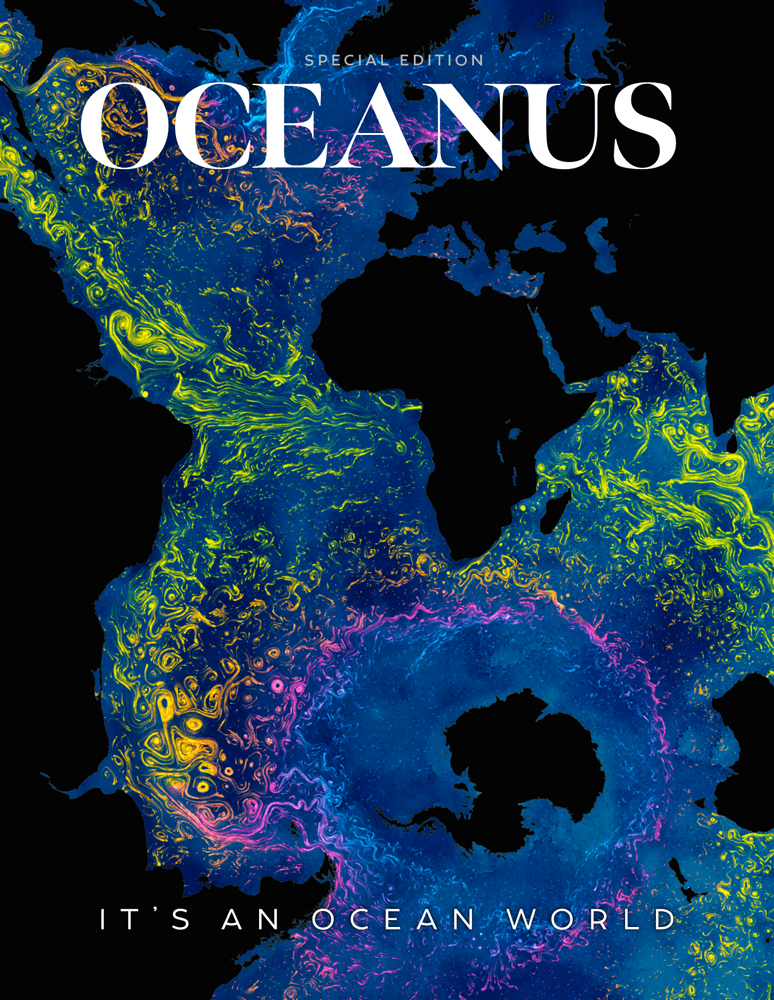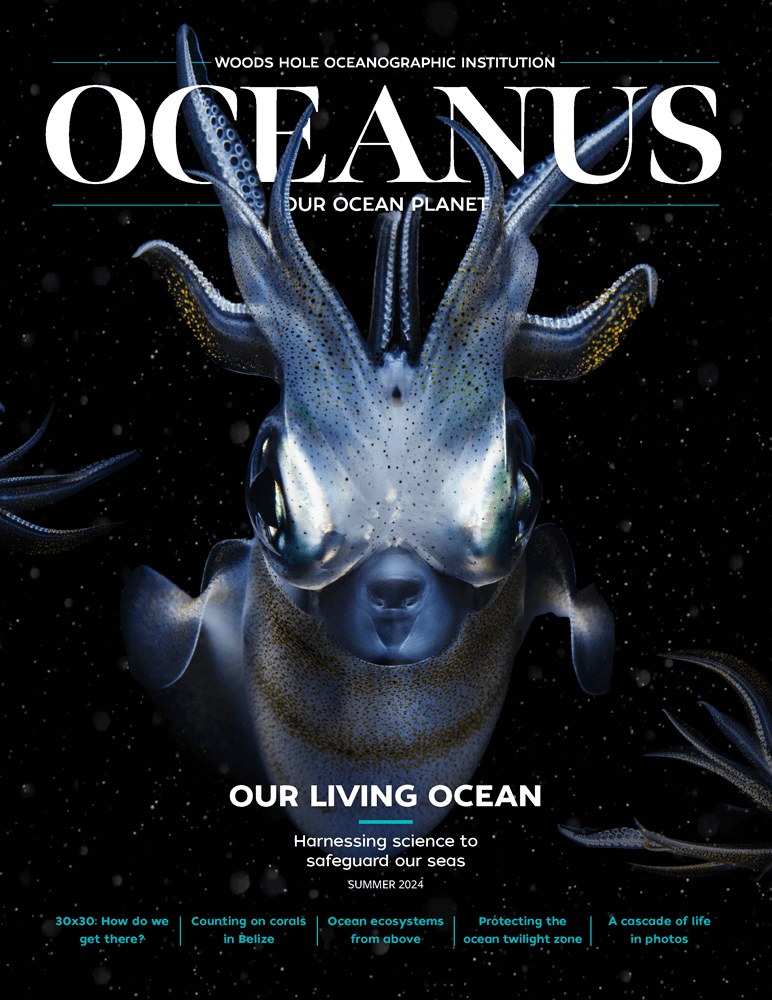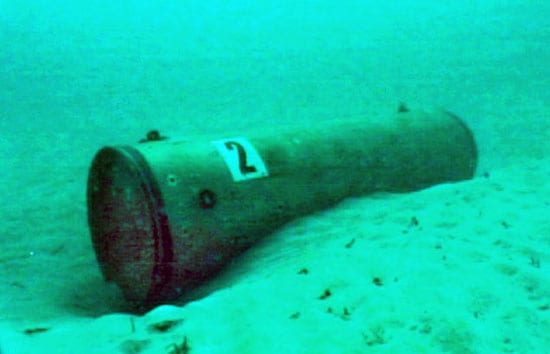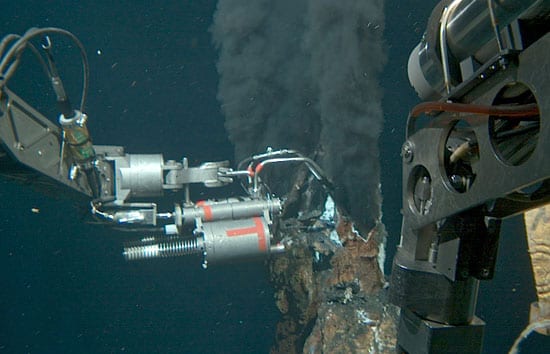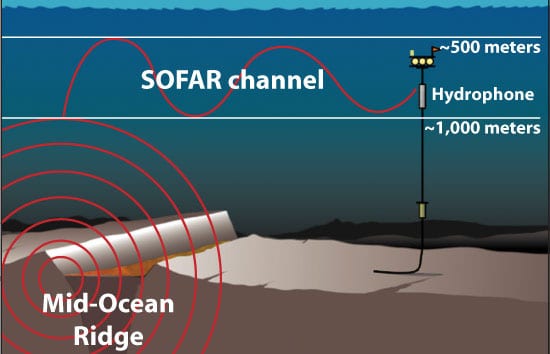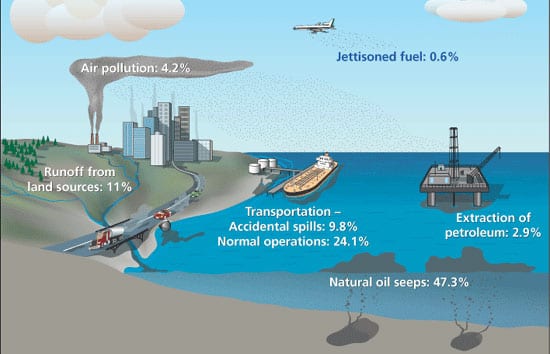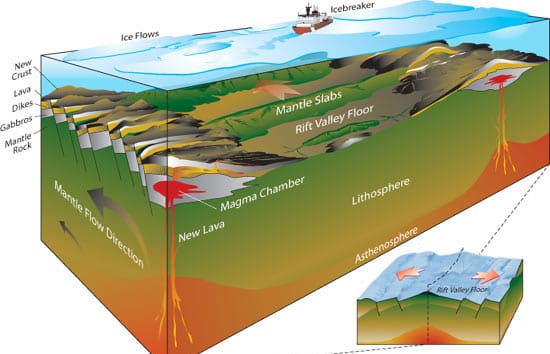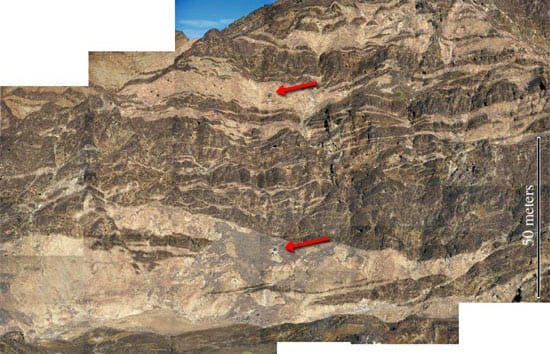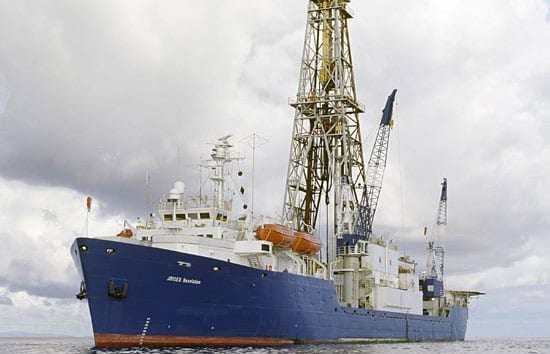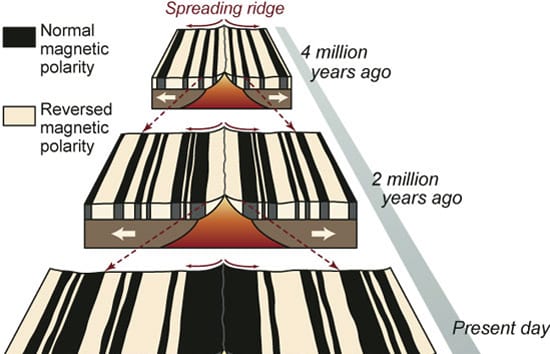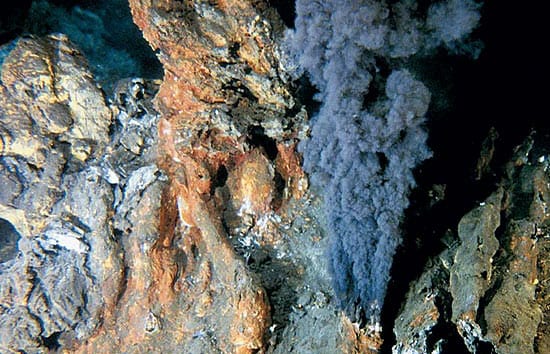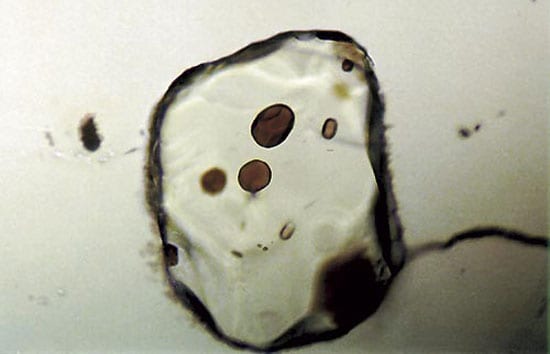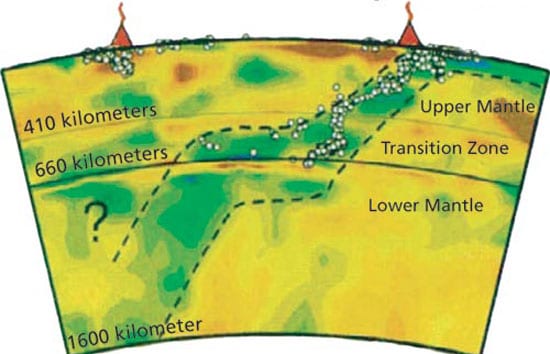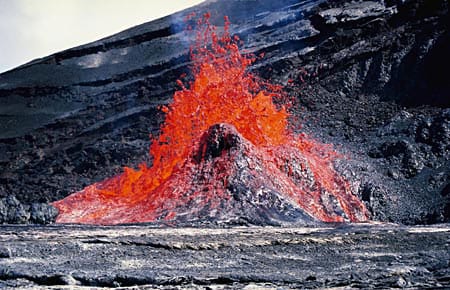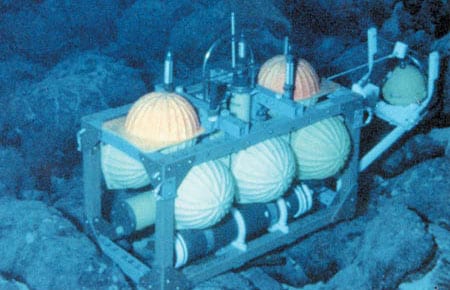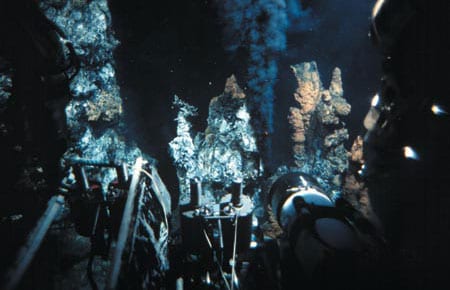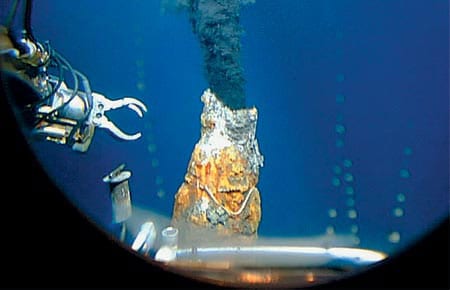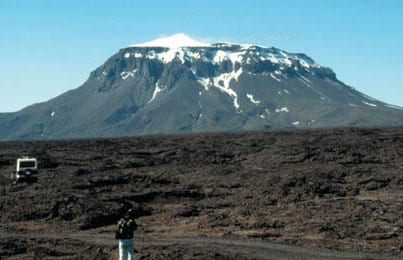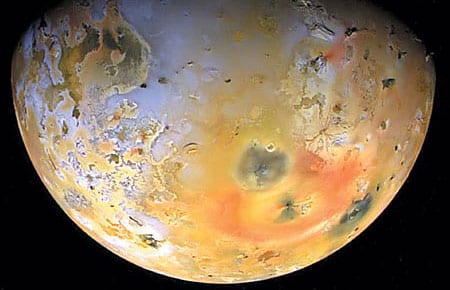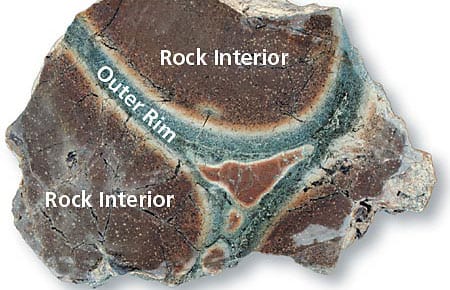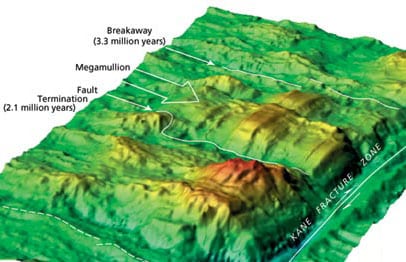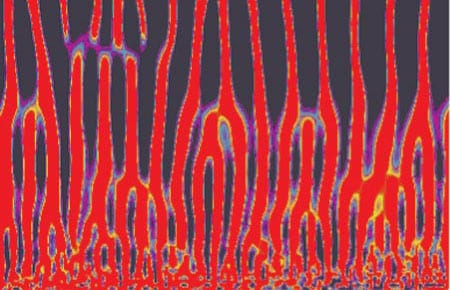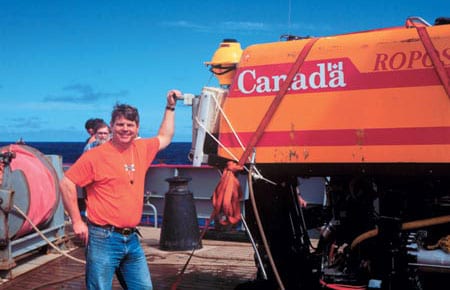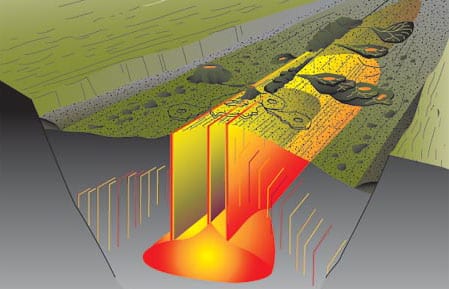Oceanus Online Archive
Where Are Mines Hiding on the Seafloor?
Eternally and incessantly, waves and currents stir up sand from the seafloor near the coast. Sediments get suspended in the ocean, carried onshore and off, and deposited elsewhere. In the process, objects on the seafloor—natural and unnatural—can get buried and uncovered.
Read MoreThe Deep Ocean Exploration Institute
This may sound like heresy, but for some of us at Woods Hole Oceanographic Institution, the ocean is a bit of a nuisance. All that lovely blue water can get in the way.
Read MoreEars in the Ocean
If you sought to delve into the forces that drive and shape the face of the earth and that distinguish it from all other planets in our solar system, you would shine a spotlight on the mid-ocean ridges.
Read MoreMixing Oil and Water
In recent decades scientists have made substantial progress in understanding how oil enters the oceans, what happens to it, and how it affects marine organisms and ecosystems. This knowledge has led to regulations, practices, and decisions that have helped us reduce sources of pollution, prevent and respond to spills, clean up contaminated environments, wisely dredge harbors, and locate new petroleum handling facilities.
Read MoreEarth’s Complex Complexion
Even as you read this, Earth’s crust is continually being reborn and recycled in a dynamic process that fundamentally shapes our planet. We’re not generally aware of all this action because most of it occurs at the seafloor, under a formidable watery shroud, and often in remote regions of the oceans.
Read MoreUnraveling the Tapestry of Ocean Crust
Most people know that oceans cover about 70 percent of Earth’s surface. Fewer people realize that the crust beneath oceans and continents is fundamentally different. Why this is so remains a mystery that scientists are still trying to solve.
Read MoreA Sea Change in Ocean Drilling
Stretching from inland rivers and bays to the edge of the continental shelf, the coastal ocean accounts for about 10 percent of the ocean’s surface area. Yet this relatively small sliver of ocean contains about half of all the microscopic plants adrift in our seas.
Read MorePaving the SeafloorBrick by Brick
Most of Earth’s crust is manufactured at the bottom of the sea. Deep beneath the waves and beyond our view, magma erupts along a 40,000-mile volcanic mountain chain that bisects the ocean floors and encircles the globe. The lava flowing from these mid-ocean ridges solidifies into new ocean crust that spreads out and paves the surface of our planet.
Read MoreThe Remarkable Diversity of Seafloor Vents
Since 1982, I had spent most of my waking hours examining pieces of seafloor vent deposits that had been recovered during a routine dredging operation along the Juan de Fuca Ridge off the Pacific Northwest coast.
Read MoreIf Rocks Could Talk…
Every rock on Earth contains a clock, a thermometer, and a barometer.
Read MoreThe Engine that Drives Earth
Poets and philosophers have celebrated the timelessness of the land around us for eons, but the solid Earth is actually a very dynamic body. Great tectonic plates are in constant motion at Earth’s surface.
Read MoreConduits Into Earth’s Inaccessible Interior
Jules Verne wrote about a way to journey to the center of the earth, but unfortunately, we haven’t found it yet. So we really don’t know what happens deep inside our planet.
Read MoreVoyage to Vailulu’u
It was like a pirate’s treasure map. A dotted line clearly showed the trail, but at the end of it, no “X” marked the spot. Then a telltale clue caught…
Read MoreThe Big MELT
More than 95 percent of the earth’s volcanic magma is generated beneath the seafloor at mid-ocean ridges.
Read MoreALISS in Wonderland
In 1985, Cindy Van Dover, then a graduate student in biology in the MIT/WHOI Joint Program, discovered a novel light-sensing organ on a unique species of shrimp that lives at high-temperature, black smoker chimneys on the Mid-Atlantic Ridge. If this photoreceptor were indeed some sort of primitive “eye,” the question instantly arose: At depths of some 3,600 meters, where sunlight cannot penetrate, what are these shrimp looking at? The search for a source of light in deep-sea hydrothermal environments began.
Read MoreHow to Build a Black Smoker Chimney
Diving along the mid-ocean ridge at 21°N on the East Pacific Rise, scientists within the deep submersible Alvin peered through their tiny portholes two decades ago to see an astonishing sight: Clouds of billowing black “smoke” rising rapidly from the tops of tall rocky “chimneys.”
Read MoreHitting the Hotspots
The great volcanic mid-ocean ridge system stretches continuously around the globe for 60,000 kilometers, nearly all of it hidden beneath the world’s oceans.
Read MoreLife on the Seafloor and Elsewhere in the Solar System
The RIDGE program (Ridge Inter-Disciplinary Globe Experiments) was sharply focused on the global spreading center system, but the program’s goals were broadly defined. RIDGE was designed to explore the causes, consequences, and linkages associated with the physical, chemical, and biological processes that transfer mass and energy from the interior to the surface of the planet along the mid-ocean ridges.
Read MoreThe Cauldron Beneath the Seafloor
Just over 20 years ago, scientists exploring the mid-ocean ridge system first made the spectacular discovery of black smokers—hydrothermal chimneys made of metal sulfide minerals that vigorously discharge hot, dark, particulate-laden fluids into the ocean.
Read MoreDiscovery of “Megamullions” Reveals Gateways Into the Ocean Crust and Upper Mantle
urposes. From the end of the nineteenth into the first half of the twentieth century, drilling was used to penetrate the reef and uppermost volcanic foundation of several oceanic islands, and these glimpses of oceanic geology whetted the scientific community’s appetite for deeper and more complete data.
Read MoreExploring The Global Mid-Ocean Ridge
There is a natural tendency in scientific investigations for increased specialization. Most important advances are made by narrowing focus and building on the broad foundation of earlier, more general research.
Read MoreMelt Extraction from the Mantle Beneath Mid-Ocean Ridges
As the oceanic plates move apart at mid-ocean ridges, rocks from Earth’s mantle, far below, rise to fill the void, mostly via slow plastic flow.
Read MoreIndian Ocean’s Atlantis Bank Yields Deep-Earth Insight
I never imagined I would spend six weeks of my life “wandering around” the seafloor exploring an 11 million year old beach, and it never occurred to me to look for a fossil island. But that’s what I did, and that’s what we found on two research voyages separated by more than a decade.
Read MoreMid-Atlantic Ridge Volcanic Processes
Long before the plate-tectonic revolution began in the 1960s, scientists envisioned drilling into the ocean crust to investigate Earth’s evolution.
Read More